Recife, one of Brazil’s oldest cities, was founded by the Portuguese in 1537.
With a rich cultural mix resulting from the coexistence of Portuguese, Indians and Africans, the city offers a number of tourist attractions for all tastes.

In addition to its beautiful beaches, Recife has a wealth of historical and cultural attractions. Surrounded by the mouths of the Capibaribe and Beberibe rivers and several canals and bridges, it has become known as the “Brazilian Venice”.
7 Main Tourist Attractions in Recife
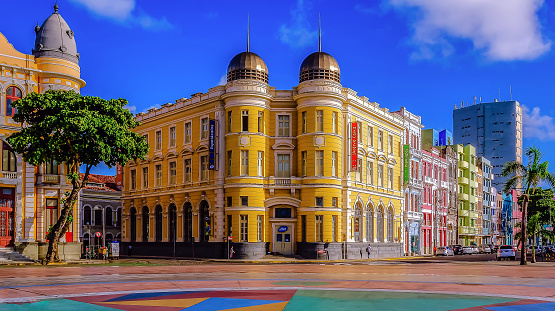

5 principais pontos turísticos de Recife03:51

Praia de Boa Viagem em Recife05:05
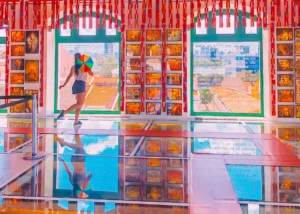
Museu do Frevo em Recife05:05
- Boa Viagem Beach
- Marco Zero Square
- Francisco Brennand Ceramics Workshop
- Santa Isabel Theatre
- House of Culture
- Ricardo Brennand Institute
- Frevo Museum
1. Boa Viagem Beach
Boa Viagem Beach is one of the postcards of Recife. With its warm waters and long stretch of sand, it’s the ideal place to relax and enjoy the sun.

Along the seafront, there are kiosks and restaurants serving typical food, making the experience even more enjoyable.
2. Marco Zero Square
Marco Zero Square, originally called Barão do Rio Branco Square, is one of the main tourist attractions in Recife, the capital of Pernambuco.
This place is not only remarkable for its beauty, but also for its historical and cultural importance.
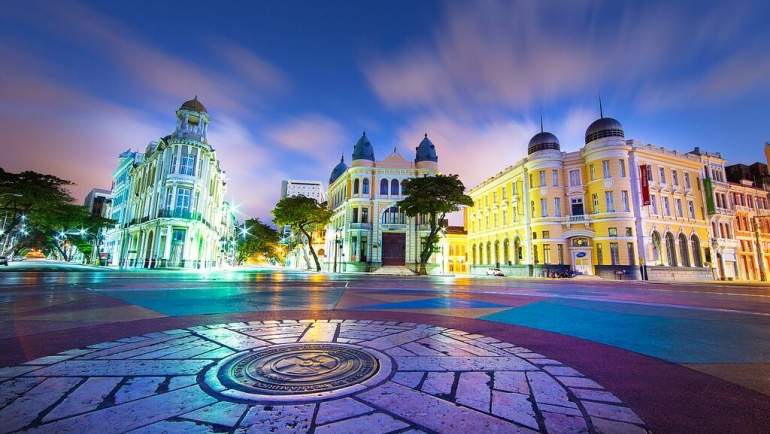
2.1 Kilometre Zero
The square is known as the Milestone Zero because it is the Kilometre Zero of Pernambuco’s roads.
The red landmark was donated by the Automobile Club and symbolises the starting point for all routes in the state.
2.2 Monuments and sculptures
On the side of the square stands the Statue of the Baron of Rio Branco, sculpted in bronze by the artist Félix Charpentier and an impressive 2.80 metres high.
In the centre of the square stands the Rose of the Winds, a work by the painter Cícero Dias. During the Carnival, the square becomes the headquarters of the multicultural festival, attracting revelers from all over Brazil and the world.
2.3 Historical importance
The Marco Zero Square represents the foundation of Recife and serves as a milestone in the history of the capital of Pernambuco. As well as being a landmark, it is surrounded by several tourist attractions.
2.4 Sculpture Park
Looking out to sea from Marco Zero, you can see the Parque das Esculturas, a collection of ceramic works by the renowned artist Francisco Brennand.
Among the pieces is the Coluna de Cristal (Crystal Column), inaugurated in 2000 in honour of the 500th anniversary of the discovery of Brazil.
The park can be accessed via a harbor, where visitors can take a boat across to see the works up close.
2.5 Craft and Carnival Centre
On the site where the old warehouses were demolished, two important spaces have been inaugurated: the Pernambuco Crafts Centre, which houses works by master craftsmen and other renowned artists from the state, and the Carnival Centre, which serves as a support space for revelers during the festivities.
During the rest of the year, the centre serves as a collection of carnival memorabilia and offers restaurants and services to tourists.
3. Ceramic Workshop Francisco Brennand
The Oficina Cerâmica Francisco Brennand is one of the most emblematic places in Recife, where art and ceramics meet in a unique and inspiring space.
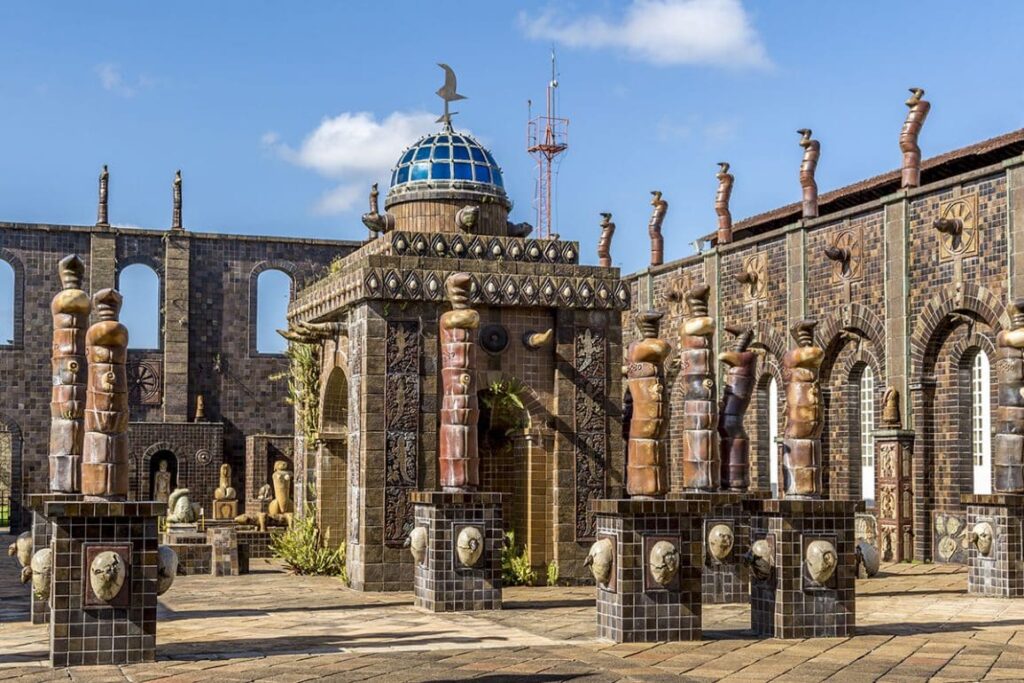
The artist Francisco Brennand is widely known for his works scattered around the city, the Obelisk at Marco Zero being one of his most iconic creations.
3.1 To visit
Brennand’s work can be seen up close in his ceramic studio, which is open to visitors.
This space is a true immersion into the artist’s creative universe, allowing visitors to explore his works in a fascinating environment.
3.2 Structure of the complex
Located in a 15,000 square metre area of a former colonial mill, the complex displays hundreds of sculptures with fantastic themes.
The works are distributed in warehouses and a vast garden with boulevards and lakes, creating a visit that combines nature and art.
3.3 Accademia space
In 2004, the Ceramics Workshop gained another reason to visit: the Accademia Space. This room contains drawings and paintings by Francisco Brennand himself, offering a broader view of his versatility as an artist.
The Accademia completes the visitor’s experience and allows for a deeper appreciation of Brennand’s work.
4. Santa Isabel Theatre
The Santa Isabel Theatre was inaugurated in 1850 and is currently one of the 14 monumental theatres in Brazil, recognised as a National Historical and Artistic Heritage Site, a title it received in 1949. This cultural space is an important reference in the history of Recife and Brazil.
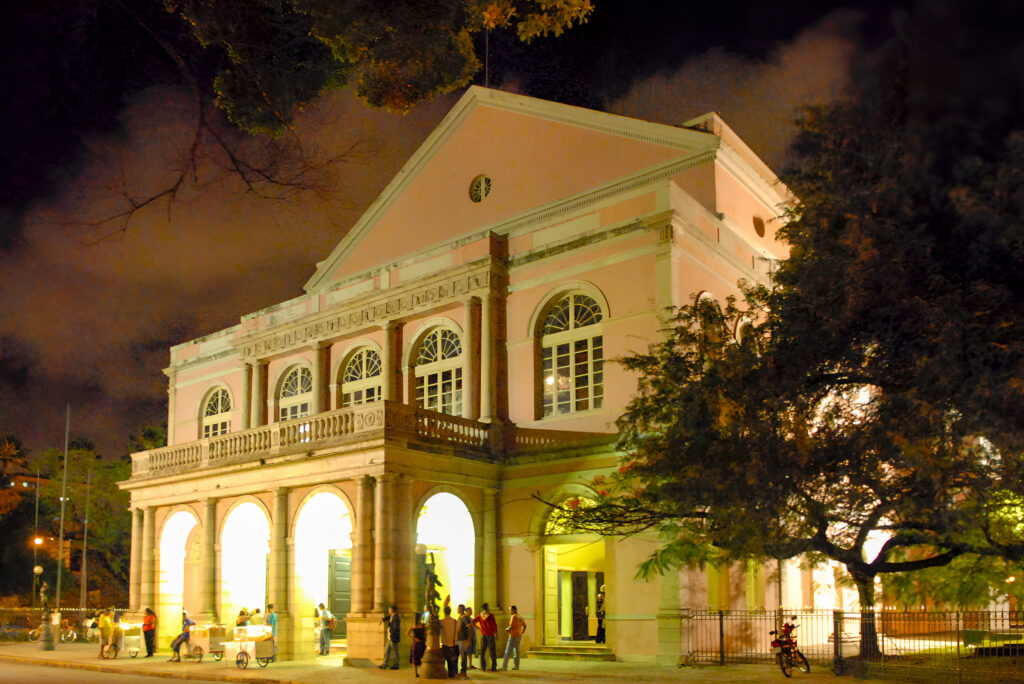
4.1 History and construction
The idea of building a public theatre in Recife came from Francisco do Rego Barros, the Baron of Boa Vista, who was president of the province from 1837 to 1844.
The project was designed and supervised by the French engineer Louis Léger Vauthier. An innovative aspect of the construction was the use of non-slave labour, a rare practice at the time, financed by lotteries, the company of shareholders and the provincial treasury.
On the eve of its inauguration, the Teatro de Pernambuco, as it was originally called, was renamed the Teatro de Santa Isabel, in honour of Princess Isabel, by decision of the provincial president, Honório Hermeto Carneiro Leão.
4.2 Fire and reconstruction
On 19 September 1869, the Teatro Santa Isabel was almost completely destroyed by fire. Reconstruction work began in May 1871, with the modernisation plans being revised by Vauthier. The theatre reopened on 10 December 1876.
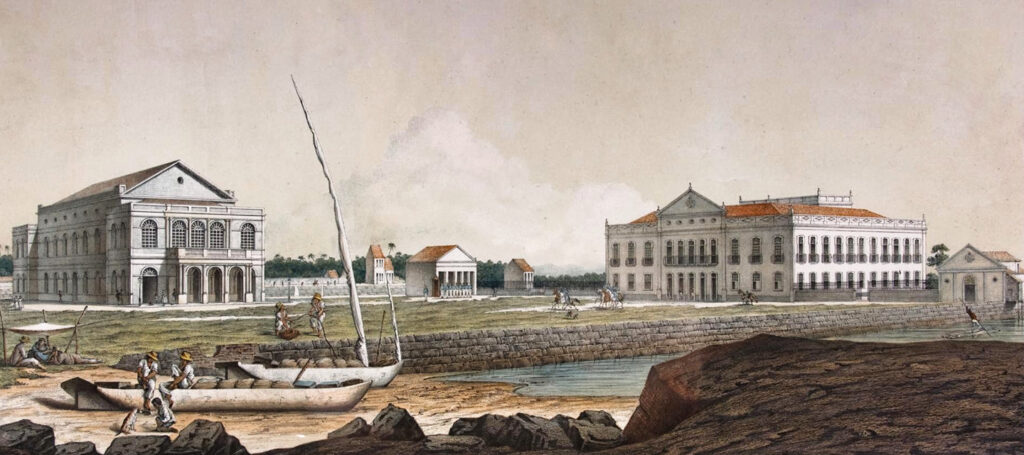
4.3 Renovations and modernisation
The Teatro Santa Isabel has undergone several renovations over the years: In 1916, during the government of Manoel Borba; in 1936, during the administration of Mayor Pereira Borges; and in 1950, during the so-called Great Centennial Renovation, when Barbosa Lima Sobrinho was governor of Pernambuco, Moraes Rego was mayor of Recife and Valdemar de Oliveira was director of the theatre.
4.4 Cultural importance
The Santa Isabel Theatre has hosted illustrious figures such as the Emperor Dom Pedro II, Castro Alves, Tobias Barreto, Carlos Gomes, the internationally renowned Russian ballerina Ana Pavlova and Procópio Ferreira, among others.
The theatre was also the scene of important historical events, such as the Praieira Rebellion, the Abolitionist Campaign and the Campaign for the Establishment of the Republic.
Joaquim Nabuco and José Mariano are inextricably linked to the history of the theatre.
Joaquim Nabuco uttered the famous phrase engraved on a plaque in the theatre: “The historical truth is this: here we won the cause of abolition”.
Before the end of the decade, the Teatro Santa Isabel once again became the scene of the political battles that were rocking the country, this time for the Republic, with speeches by Martins Júnior and Silva Jardim.
5. House of Culture
Located on the banks of the Capibaribe River, the Luiz Gonzaga House of Culture is one of Recife’s largest craft sales centres and one of the postcards of the State of Pernambuco.
This cultural space is an important meeting point for the promotion and appreciation of local art.
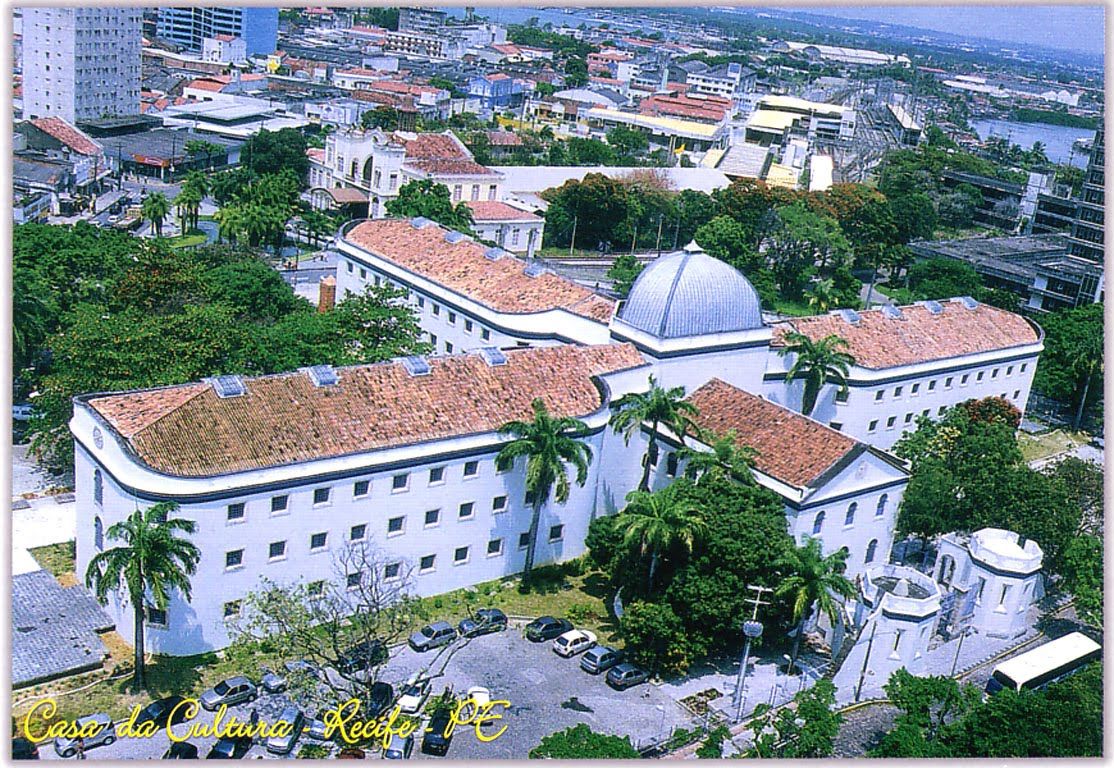
5.1 History and architecture
The imposing building that houses the Casa da Cultura was originally built to house the old Recife House of Detention, which remained the main penitentiary in Pernambuco for more than a century. A
The former prison was inaugurated on April 25th 1855 and is one of the largest 19th century buildings in the region.
The original project was designed by the engineer and town planner José Mamede Alves Ferreira, who was also responsible for other important works in the city, such as the Pedro II Hospital and the Pernambucano Gymnasium.
The building follows the model of the Panopticon, following the traditional security standards of the penitentiaries of the time.
5.2 Transformation and restoration
After operating as a prison for 118 years, in 1973 the then Governor Eraldo Gueiros Leite ordered the closure of the prison.
In the same year, a plan was drawn up to restore the building, and on 14 April 1976 it became the Casa da Cultura de Pernambuco.
This transformation from penitentiary to cultural centre had been conceived and planned some ten years earlier by the artist Francisco Brennand, who at the time was director of the state government’s Civil House.
At Brennand’s invitation, the Italian-Brazilian architect Lina Bo Bardi and the architect Jorge Martins Júnior were responsible for drawing up the project to renovate and adapt the building.
5.3 Attractions and activities
The former cells of the Casa da Cultura are now occupied by shops, cultural associations and snack bars.
There is also a Theatre and a Amphitheatre, which host training activities and theatre, music and dance shows promoted or supported by the state government through Fundarpe.
The Casa da Cultura houses two panels by Pernambuco painter Cícero Dias, depicting the Pernambuco Revolutions of 1817 and 1824.
In addition to the Clênio Wanderley Theatre and the Nelson Ferreira Stage, there are more than 110 arts and crafts shops and movements, such as the United Black Movement, the Political Amnesty Workers and the Union of Artisans of the Metropolitan Region of Recife and Pernambuco.
6. Ricardo Brennand Institute
The Ricardo Brennand Institute is one of the most interesting tourist attractions in Recife, attracting visitors of all ages.
This place is ideal for those who appreciate art, antique objects and impressive architecture, all in the middle of a beautiful open-air landscape.
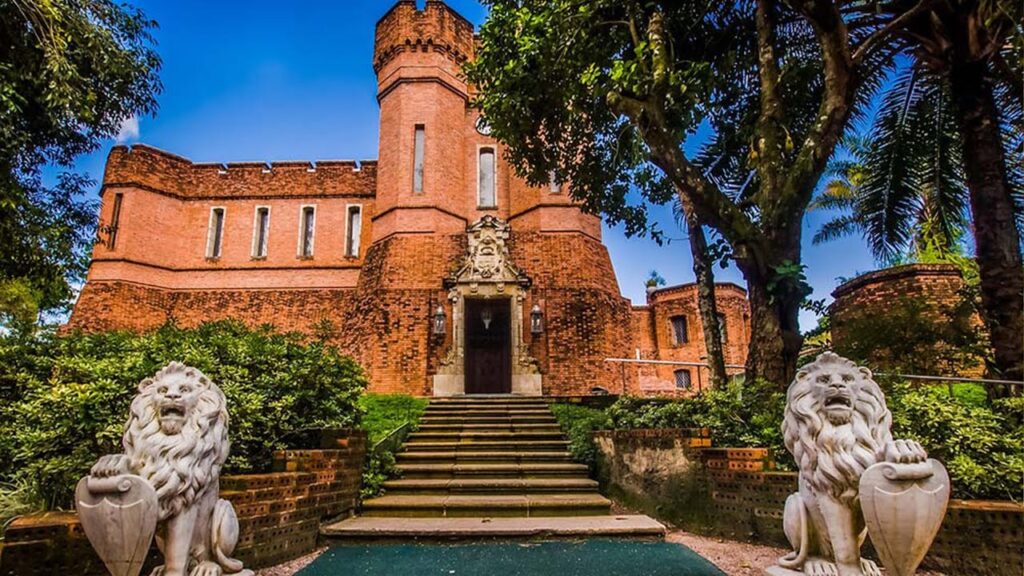
6.1 Structure and environment
The Institute is characterised by its medieval castle-like buildings, surrounded by trees and green spaces, creating a charming atmosphere that surprises everyone. It also has a cafeteria, which is a pleasant place to relax after visiting the exhibitions.
6.2 Exhibitions
The Ricardo Brennand Estate houses both permanent and temporary exhibitions, offering visitors the opportunity to appreciate Brazilian and international works of art. One of the highlights is the Dutch Brazil exhibition, with works by artists such as Frans Post and pieces in worked marble.
Another notable attraction is the representation of the Fouquet Trial, which uses extremely realistic mannequins to bring this historical moment to life.
6.3 The collection
One of the most fascinating parts of the Institute is its collection of weapons, armour, carpets and paintings. The most interesting thing is that these objects fit perfectly into the medieval atmosphere of the Institute, making the whole visually attractive and appealing to visitors.
7. Frevo Museum
The Frevo Museum is dedicated to one of the most emblematic rhythms of Pernambuco.
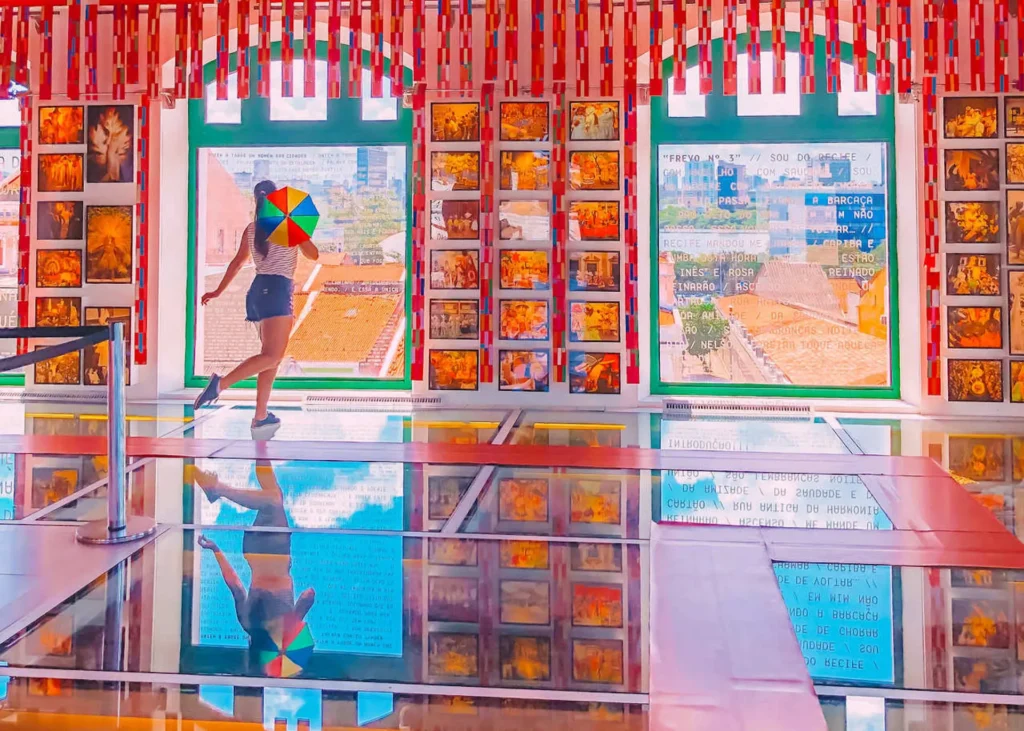
Located in Recife Antigo, the FrevoMuseum offers an immersion into the history and culture of Frevo, with interactive exhibitions, dance and music performances.
It is a space that celebrates the vibrant tradition of Recife’s Carnival.
Recife Tourist Guide.
Publicações Relacionadas
Recife of the Dutch and Dutch Invasion in Brazil
Igarassu: Discover the historic city of Pernambuco
Basilica of Our Lady of Penha: A Historical Overview
History of the Basilica of Our Lady of Mount Carmel in Recife
History of the Church of Our Lady of the Rosary of the Black Men
Museu do Homem do Nordeste: A Cultural Journey
History and Curiosities of the Kahal Zur Israel Synagogue
Sacred Recife and Religious Tourism in Recife, Pernambuco
Main historical landmarks of Pernambuco and Recife
Church of Nossa Senhora da Boa Viagem History
Exploring the Charm of Recife: A Historical Journey
Church of Santa Teresa D'Ávila da Terceira Ordem do Carmo History
Cais do Sertão Museum: Discover Sertanejo Culture
History and architecture of the Palácio do Campo das Princesas in Recife
This post is also on:
![]() Português
Português ![]() English
English ![]() Deutsch
Deutsch ![]() Español
Español ![]() Français
Français



















